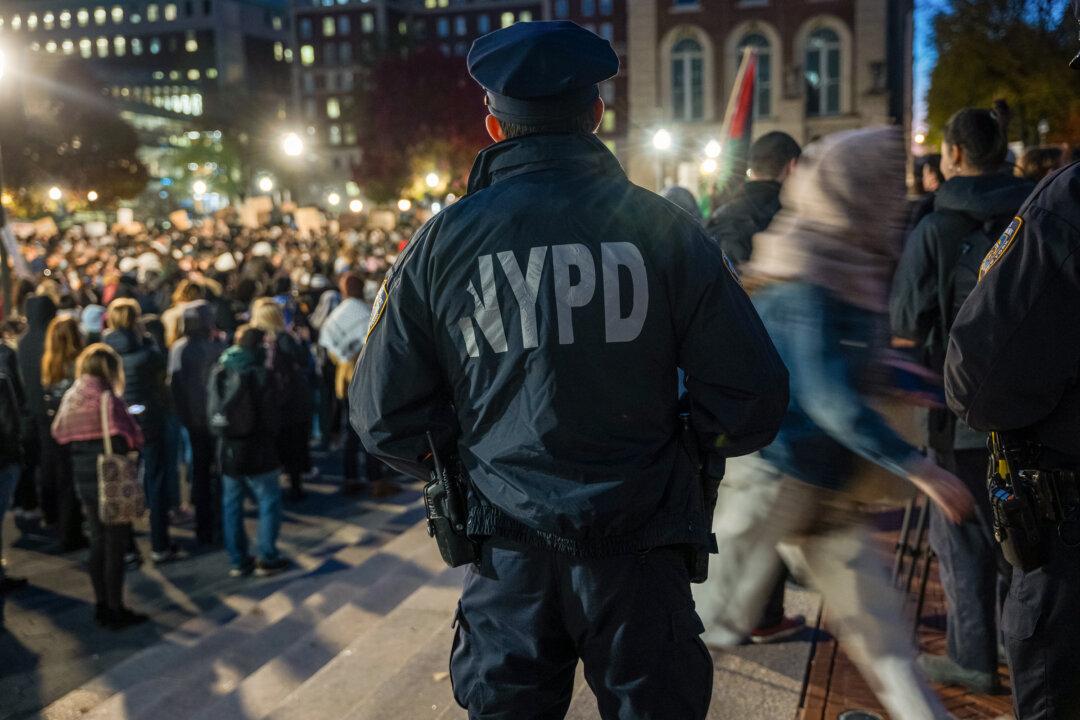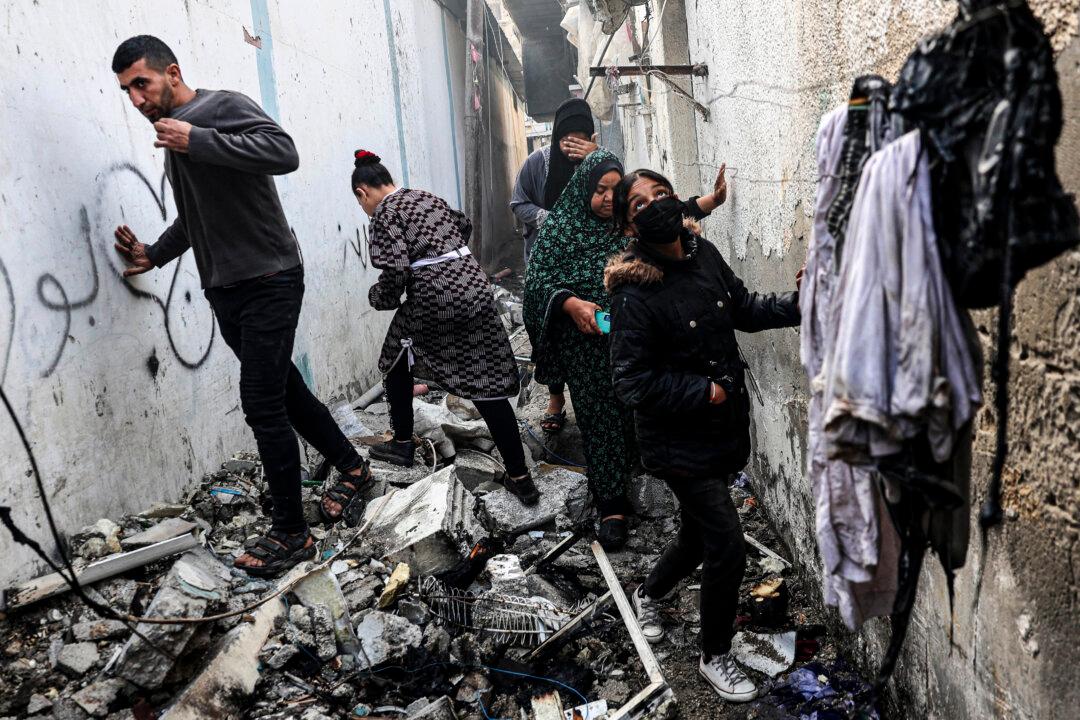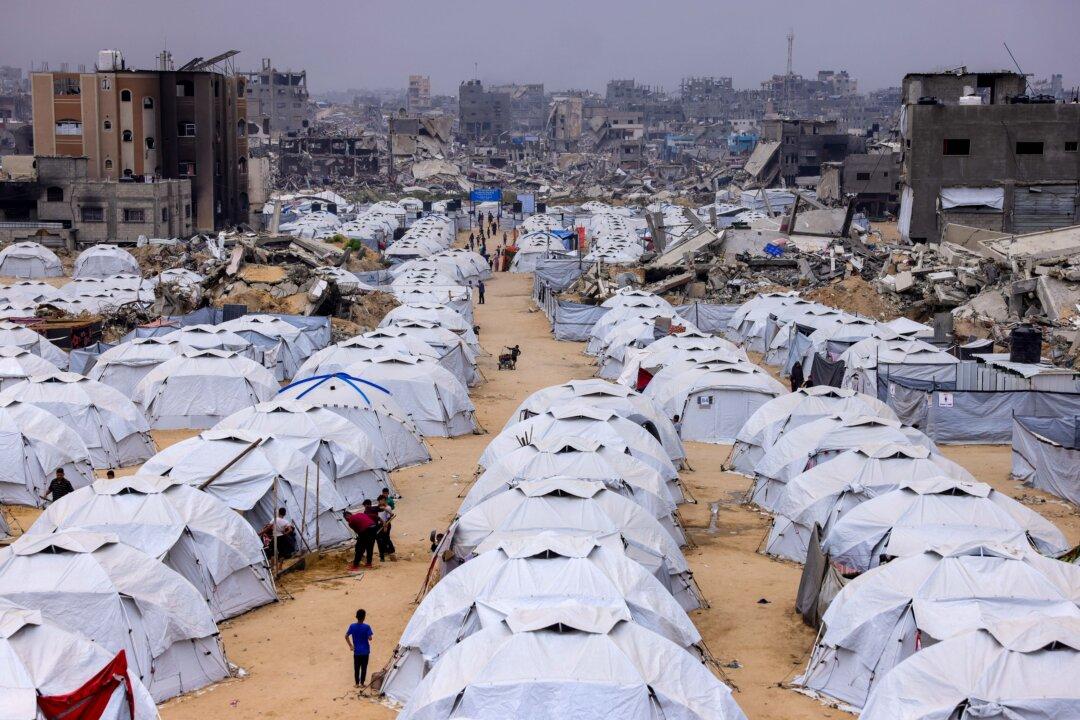Israel urged all Palestinian civilians to leave Gaza City on July 10 as the Israel Defense Forces (IDF) prepared to escalate its bombardment of Hamas fighters in the area.
The terrorist group Hamas has regrouped in the city after being cleared out by Israel early in the war.
The IDF dropped leaflets on Gaza City, with maps marking “safe routes” for evacuation.
Civilians were urged to head south along two routes to the central Gaza Strip.
Hamas, which controlled the Gaza Strip, said Israel’s latest offensive killed more than 60 Palestinians across the enclave on July 9.
Casualty figures released by Hamas and the medical authorities under its jurisdictions don’t distinguish between civilians and Hamas fighters.
Palestinian medical officials said an Israeli airstrike hit a tent encampment of displaced families near the town of Abassan east of Khan Younis in southern Gaza, killing more than two dozen people.
The Israeli military said it was reviewing reports of civilian casualties. IDF said the incident occurred when it struck with “precise munition” a Hamas fighter who had taken part in the Oct. 7, 2023, raid into Israel that started the war. In the raid, Hamas terrorists, aided by Gazan civilians, killed 1,200 Israelis and took more than 250 more hostage.
Strikes also were reported in the central town of Deir Al-Balah and the nearby Nuseirat refugee camp, reportedly killing 20 people.
A Hezbollah strike on July 9 killed an Israeli couple in the Golan Heights, orphaning their three teenage children.
The Lebanese terrorist group said the attack was in retaliation for the drone hit on a senior Hezbollah figure in Syrian territory the same day.
While Yasser Nemr Qranbish had been a bodyguard for Hezbollah leader Hassan Nasrallah, he was now believed to be in charge of a Hezbollah unit importing weapons from Syria, according to the Alma Center, an Israeli strategic consulting group.
The IDF hasn’t formally taken responsibility for the strike that killed Mr. Qranbish.
In what appeared to be related retaliation, the IDF, with tanks and artillery, attacked Syrian army targets that Israel said violated the 1974 demilitarization agreement in the area.
“The IDF holds the Syrian military responsible for all activities occurring within its territory and will not allow any attempts to violate Israeli sovereignty,” the IDF said.
The IDF said its two-week offensive in the Shejaiya area of Gaza City was concluding.
Soldiers destroyed two more underground tunnels, bringing to eight the total demolished.
Meanwhile, Egyptian and Qatari mediators continued working to reach a cease-fire agreement.
While negotiators made a breakthrough last week, Israel and Hamas both appeared to backpedal in recent days.
Israel Defense Minister Yoav Gallant met on July 9 with U.S. Middle East envoy Brett McGurk.
“The two discussed the importance of seizing the opportunity created to achieve an agreement for the return of hostages held by Hamas in Gaza,” the defense ministry said on July 10.
“They discussed the challenges that remain in achieving such an agreement, as well as possible solutions to address them.”







